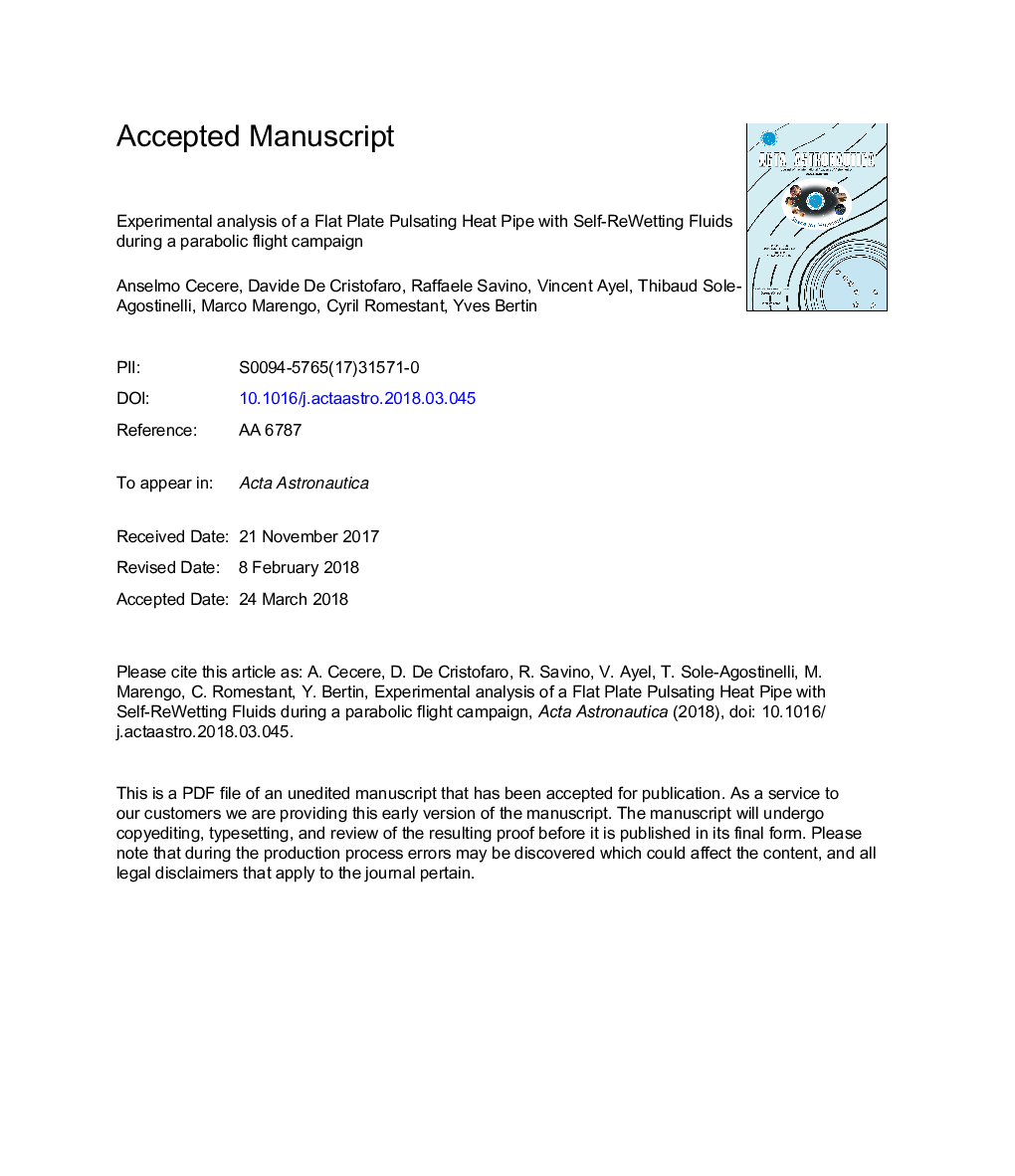| Article ID | Journal | Published Year | Pages | File Type |
|---|---|---|---|---|
| 8055563 | Acta Astronautica | 2018 | 26 Pages |
Abstract
A Flat Plate Pulsating Heat Pipe (FPPHP) filled with an ordinary liquid (water) and a self-rewetting mixture (dilutes aqueous solutions of long-chain alcohols with unusual surface tension behavior) is investigated under variable gravity conditions on board a 'Zero-g' plane during the 65th Parabolic Flight Campaign of the European Space Agency. The FPPHP thermal performance in terms of evaporator and condenser temperatures, start-up levels and flow regimes is characterized for the two working fluids and a power input ranging from 0 to 200â¯W (up to 17â¯W/cm2 at the heater/evaporator wall interface). The experimental set-up also includes a transparent plate enabling the visualization of the oscillating flow patterns during the experiments. For a low power input (4â¯W/cm2), the pulsating heat pipe filled with pure water is not able to work under low-g conditions, because the evaporator immediately exhibits dry-out conditions and the fluid oscillations stops, preventing heat transfer between the hot and cold side and resulting in a global increase of the temperatures. On the other hand, the FPPHP filled with the self-rewetting fluid runs also during the microgravity phase. The liquid rewets several times the evaporator zone triggering the oscillatory regime. The self-rewetting fluid helps both the start-up and the thermal performance of the FPPHP in microgravity conditions.
Related Topics
Physical Sciences and Engineering
Engineering
Aerospace Engineering
Authors
Anselmo Cecere, Davide De Cristofaro, Raffaele Savino, Vincent Ayel, Thibaud Sole-Agostinelli, Marco Marengo, Cyril Romestant, Yves Bertin,
